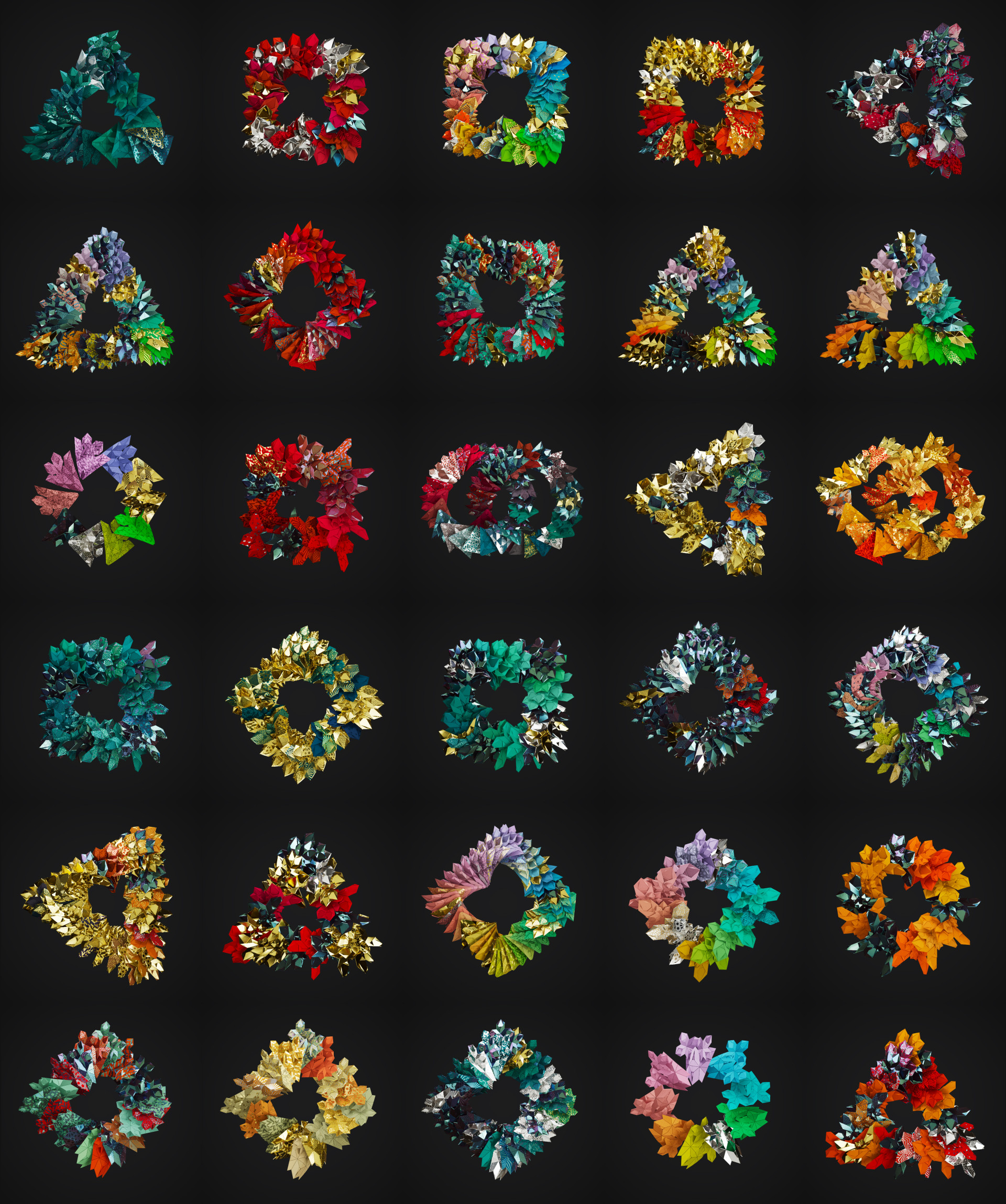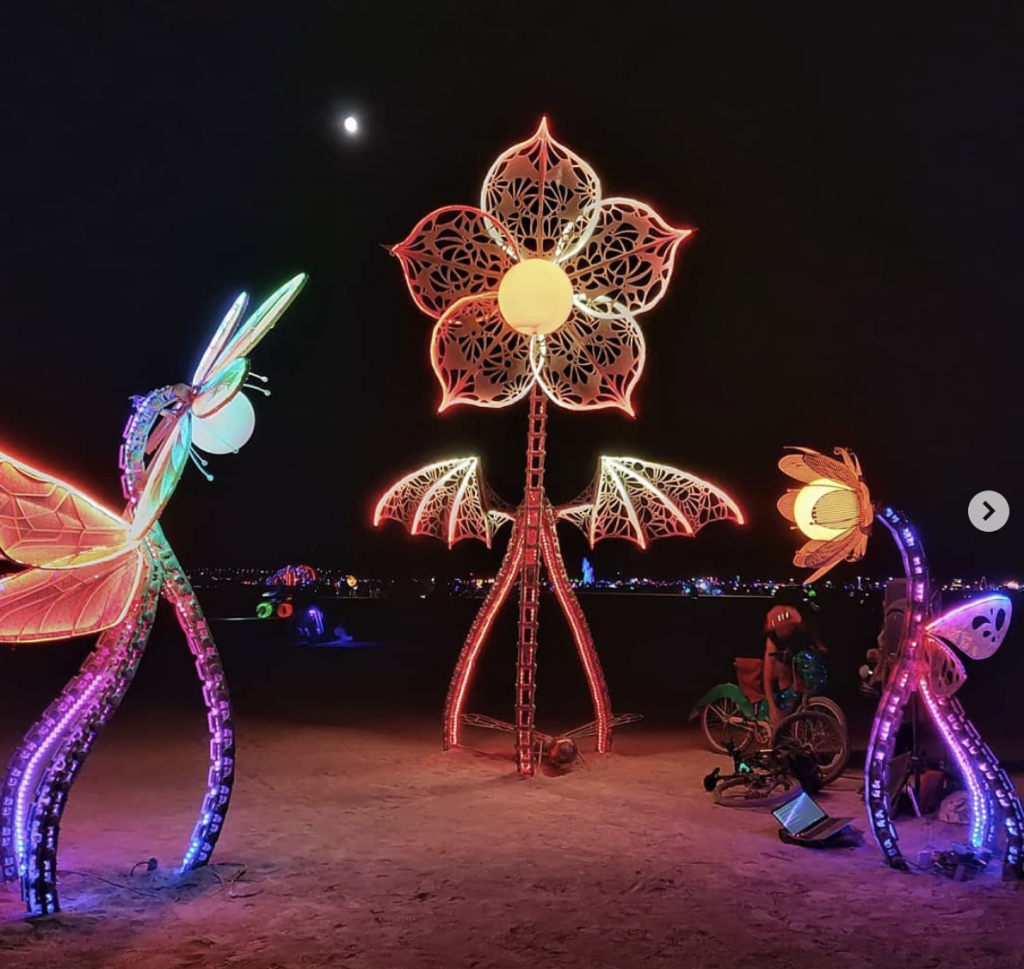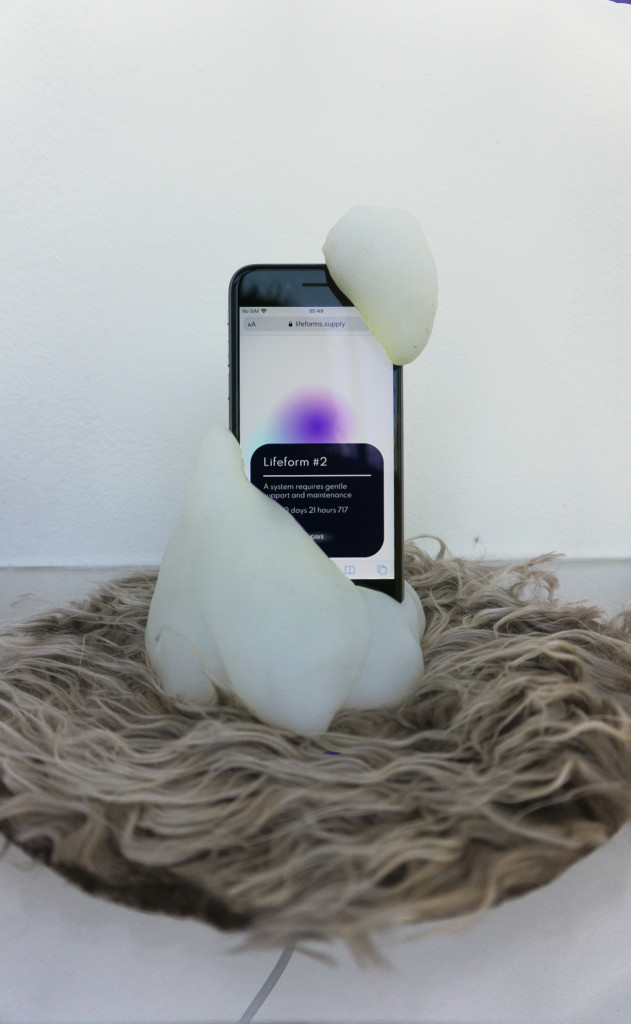Performing Lectures
When public speaking becomes art, the digital and physical apparatus of the performance are made visible.


The world of NFT art presents itself as a very lively place—and I mean this literally. Wherever you care to look, you’ll find blockchain-enabled art projects with features that emphasize vitality and aliveness, propagation and reproduction. This includes works that I count among the most conceptually rich approaches to NFTs, such as Harm van den Dorpel’s Mutant Garden Seeder (2021) and Sarah Friend’s Lifeforms (2021), as well as from the canon of early blockchain art, such as terra0 (2016–) and Primavera de Filippi’s Plantoid (2015–). Similar patterns continue in new releases such as Life in our Minds (2022) by Random International and Danil Krivoruchko. What are we to make of this? Surely, nothing really “lives” on the blockchain—yet?
We must not misinterpret these kinds of projects as a naïve animism of the blockchain, or as suggestions that semi-autonomous behaviors on the blockchain could amount to some sort of sentience. Instead, artists are here expressing genuine excitement concerning speculative terrains of nonhuman agency that are beginning to manifest in computational systems. The underlying question—What might become possible when artworks gain agency?—is truly fascinating. It has far-reaching implications not only for how the aesthetics of digital art will continue to evolve, but also for difficult questions regarding art authorship and ownership.
At minimum, “to have agency” means to be able to act with the purpose of causing specific effects in an environment. Digital artworks, in this sense, might be described as having at least some degree of agency when they are able to self-replicate, to autonomously generate and change their appearance, or to self-destruct. Smart contracts are suited perfectly for enabling such behaviors, which lend themselves to vitalistic metaphors: digital artworks are now capable of “reproducing,” “evolving,” and “dying.”

In technical terms, smart contracts represent executable code hosted and run on blockchains. They can be designed to monitor on-chain interactions and transactions, and to trigger wide-ranging behaviors of NFTs (or other tokens) linked to the contracts. When such functionality is implemented, digital artworks may present situations in which it no longer makes sense to identify a human artist as the creator and decision-maker, in which audiences are not in control of how they experience the work, and in which art-market gatekeepers lose their socioeconomic power over how the work circulates.
Where once we might have perceived static art objects created and controlled by human artists, now we are seeing the emergence of new kinds of strange agential assemblages.
When this happens, significant shifts of agency have taken place—away from human agents such as artists, audiences, or collectors, and toward the artworks themselves as (more or less) autonomous computational agents. The result is a potential for the emergence of more-than-human art ecologies in which agency becomes distributed between algorithm and anthropos. This makes possible Tamagotchi-style simulations of “living” NFTs, but also so much more. The sculptural works of Plantoid are enabled by smart contracts to commission new versions of themselves. Terra0 is an artwork-as-proof-of-concept in the form of a self-owning, self-reproducing forest in Germany, which is capable of using smart contracts and a blockchain-enabled infrastructure of sensors to monitor its own health, and to make real-world decisions about its own preservation and growth. Lifeforms implements a simple yet existential behavior that causes individual tokens of the series to self-destruct unless they are given away by their owners within ninety days. The list goes on.

As a direct consequence of how these projects reorganize agency between human and computational entities, our conventional views on subject-object boundaries, on ownership, and on anthropocentric notions of personhood can become radically destabilized. Where once we might have perceived static art objects created and controlled by human artists, now we are seeing the emergence of new kinds of strange agential assemblages. To borrow a phrase from Laura Lotti, a DAO devleoper and media theorist, these assemblages exist in new kinds of decentralized ecosystems of value generation and distribution. Here, human participants are becoming entangled with the agencies of semi-autonomous computational systems, algorithmic protocols, legal mechanisms, and other non-human elements.
What excites me most about such new constellations—and about the potential uses of smart contracts in general—is how they point toward new ways of creating and sharing value. Like all contracts, smart contracts govern interactions between parties. This can mean controlling how an artwork interfaces with the world, including what can or must be done with it, and by whom. If designed in just the right way, a smart contract can then determine not just an artwork’s look and feel, but it can also intervene in the broader “cultural life” of the work, including social and economic aspects of how it may be collected, bought, sold, or exhibited. With this, we are just a tiny step away from the idea that a digital artwork might own itself. And once this thought has sunk in, questions about what an artwork is or what it is worth begin to sound a lot like bigger philosophical and political questions concerning self-determination, governance, autonomy, and the nature of property itself. Could an artwork that possesses agency ultimately undermine the very idea of its “ownability”? Could it, in other words, gain the ability to resist its own commodification?
Lifeforms, with its deceptively simple life-or-death mechanic, pushes these questions very far. Because the NFTs that constitute the series must be given away within ninety days, the project can only continue to exist if informal and sustainable gift economies emerge. Here, the “value” of the tokenized artworks becomes detached from a traditional notion of private ownership. What takes its place is a non-financial duty of care shared between users who want to ensure the survival of the computational entities. Ultimately, the smart contract powering the project therefore determines not only the behavior of the tokens, but also that of the audience. Instead of incentivizing financially motivated interactions, the contract stimulates a very specific kind of social engagement, of the sort that we might not usually dedicate to ownable commodities, but rather to values that are uncommodifiable and communal.

In a 2006 interview that touched on anarchy as an organizational principle, David Graeber briefly discussed the idea of “self-subverting authority,” a type of authority that has an important justification for existing, but that may, over time, undermine its own basis—think of a teacher who is surpassed by his student. In other words, this authority has such transformative potential that it could ultimately rule out the need for its own existence. What might it mean for such a trajectory to be embedded in software code? Is this a functionality that can be encoded in smart contracts?
Could an artwork that possesses agency ultimately undermine the very idea of its “ownability”?
At the last Ars Electronica Festival, I heard the pioneering Japanese media artist Masaki Fujihata speak about his NFT project Brave New Commons (2021), which uses a pricing mechanism whereby each time a new buyer purchases a copy of a work in the series, the price is cut in half. For Fujihata, the project is a subversive intervention into the overhyped NFT art market, designed to undermine the value it generates. On some level, the project thereby approximates Graeber’s idea of self-subverting authority. But there is not vitalism here—just death by diminishing returns. Here, agency has not been shifted to the artwork to a point where the artist’s authority might be cancelled out. Instead, the “trad” value proposition of the artwork as an easily commodifiable and tradeable artifact remains intact (and the artist reaped a very respectable profit). Within the logic of a profit-driven art world, the functionality of Friend’s Lifeforms, by contrast, adheres much more closely to the idea of self-subverting authority.
It will be exciting to see further experiments that use blockchains for the radical recalibrating of agency. Digital art is a great laboratory for such experimentation, but it is far from the only suitable context. For me, the most exciting developments point in the direction of art-world DAOs, which Ruth Catlow and Penny Rafferty, referencing the work of Kei Kreutler in their new book Radical Friends, have described as “operationalized artist manifestos.” Such structures are capable of moving us beyond simple reorganizations of art-market mechanics (such as the pseudo-decentralization of fractionalized ownership), and toward comprehensively implemented non-hierarchical community-building in which mutual aid trumps private property. What, I wonder, will happen to existing value propositions of aesthetics and digital art ownership when the next generation of DAOs pushes the limits of redistributed agency to a point where smart contract-enabled unownability—and with it new forms of self-subverting authority—becomes available at scale?
Martin Zeilinger is senior lecturer in computational arts and technology at Abertay University in Dundee, Scotland.
